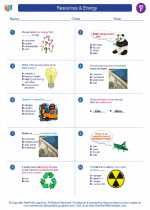Employment Opportunities
Employment opportunities refer to the various options available for individuals to gain paid work. These opportunities can vary based on factors such as education, skills, location, and economic conditions. Understanding the different types of employment opportunities and how to prepare for them is essential for individuals entering the workforce.
Types of Employment Opportunities
1. Full-time Employment: In full-time employment, individuals work a standard number of hours per week and are typically eligible for benefits such as health insurance and paid time off.
2. Part-time Employment: Part-time employment involves working fewer hours than a full-time position, often with no benefits or fewer benefits compared to full-time roles.
3. Temporary Employment: Temporary jobs are for a specific period, often to cover for regular employees' leave or to meet short-term business needs.
4. Freelance or Self-Employment: Freelancers are self-employed individuals who offer their services to multiple clients on a contractual basis. They are responsible for managing their own taxes and benefits.
Factors Affecting Employment Opportunities
1. Education and Skills: Higher levels of education and specialized skills can lead to more diverse and higher-paying job opportunities.
2. Location: Job availability can vary by region, with urban areas typically offering more diverse employment options compared to rural areas.
3. Economic Conditions: Economic factors such as recessions or industry growth can impact the availability of job opportunities in specific sectors.
Preparing for Employment
1. Education and Training: Pursuing relevant education and training programs can enhance job prospects and open up more opportunities.
2. Networking: Building professional connections through networking can help individuals learn about job openings and gain referrals.
3. Resume and Interview Skills: Developing a strong resume and honing interview skills can significantly improve chances of securing employment.
4. Adaptability and Resilience: Being adaptable and resilient in the face of changing job markets and economic conditions is crucial for long-term career success.
Study Guide
1. What are the different types of employment opportunities?
a) Full-time Employment
b) Part-time Employment
c) Temporary Employment
d) Freelance or Self-Employment
2. How can education and skills impact employment opportunities?
Higher levels of education and specialized skills can lead to more diverse and higher-paying job opportunities.
3. What are some factors that can affect job availability?
a) Education and Skills
b) Location
c) Economic Conditions
4. What are some ways to prepare for employment?
a) Pursuing relevant education and training programs
b) Building professional connections through networking
c) Developing a strong resume and honing interview skills
d) Being adaptable and resilient in the face of changing job markets
Understanding employment opportunities and how to prepare for them is essential for individuals entering the workforce. By exploring different types of employment, understanding the factors that influence job availability, and preparing for employment, individuals can position themselves for success in the job market.
[Employment Opportunities] Related Worksheets and Study Guides:
.◂Social Studies Worksheets and Study Guides Sixth Grade. Resources & Energy

 Worksheet/Answer key
Worksheet/Answer key
 Worksheet/Answer key
Worksheet/Answer key
 Worksheet/Answer key
Worksheet/Answer key
